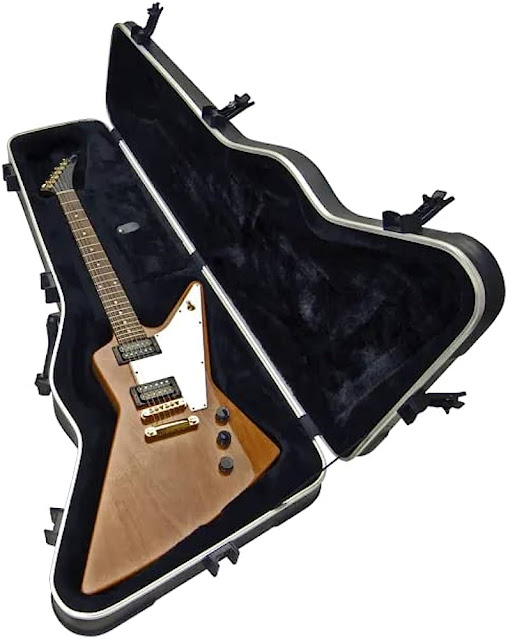The history of the Gibson Explorer dates back to the late 1950s, a time when Gibson was looking to introduce innovative designs to compete with Fender’s popular solid-body electric guitars. The Explorer, with its radical and futuristic appearance, was unlike anything Gibson had ever produced. It was introduced in 1958 as part of a series of “modernistic” guitars, which also included the Flying V and the Moderne (which was never released initially).
Historical significance and impact:
The release of the Gibson Explorer was met with mixed reactions. Its angular, asymmetrical body shape was a significant departure from the traditional guitar designs of the time, which caused controversy and skepticism among musicians and consumers. Many felt that the Explorer’s unconventional appearance would hinder its acceptance in the market. However, despite the initial reservations, the Explorer went on to make a lasting impact on the guitar industry and popular music.
Evolution of the design:
The original 1958 Gibson Explorer featured a Korina (African limba) wood body and neck, with a single cutaway, two humbucking pickups, and a simple control layout. The production of Explorers, however, was short-lived, and only around 100 guitars were made before its discontinuation in 1959. Despite its limited initial success, the Explorer’s unique design started to gain attention and appreciation in the 1970s when musicians like Allen Collins of Lynyrd Skynyrd began using it on stage.
In the years that followed, Gibson made various reissues and reinterpretations of the Explorer, with changes to materials, hardware, and finishes. These included models like the Explorer II in the late 1970s and the ’84 Explorer Reissue in the 1980s. Over time, Gibson introduced different finishes, neck profiles, and electronics options to cater to the preferences of a wider range of guitarists.
Famous musicians who have played Explorers:
The Gibson Explorer has been embraced by numerous iconic guitarists throughout its history. One of the most notable early adopters of the Explorer was Jimi Hendrix, who famously played a white 1967 model during his performance at the Monterey Pop Festival in 1967. This contributed to the Explorer’s growing popularity and established its association with rock music.
The Explorer’s impact in the world of hard rock and heavy metal cannot be overstated. James Hetfield of Metallica is arguably the most influential Explorer player in the genre. His use of Explorers, particularly his customized “ESP” model, became synonymous with Metallica’s powerful and aggressive sound. Hetfield’s influence inspired countless guitarists to pick up an Explorer and explore the realms of heavy metal.
Other renowned musicians who have wielded the Gibson Explorer include Dave Grohl of Foo Fighters, who used an Explorer extensively during his time with Nirvana, and The Edge of U2, who incorporated an Explorer into his atmospheric and textural guitar work.
Collectibility and value of vintage Explorers:
Vintage Gibson Explorers have become highly sought-after by collectors and enthusiasts, commanding significant value in the market. The limited production numbers of the original late 1950s Explorers contribute to their rarity and exclusivity. An original 1958 Gibson Explorer in excellent condition can fetch prices well into the six-figure range in today’s vintage guitar market.
Certain factors affect the collectibility and value of vintage Explorers. The condition, originality, and provenance of the instrument play a significant role. Guitars with all-original parts, finishes, and minimal wear tend to command higher prices. Additionally, the desirability of specific model years and limited editions can drive up their value even further.
The popularity of vintage Explorers among collectors has also led to a thriving market for reissues and custom shop replicas. Gibson has released various reissue models over the years, aiming to capture the essence of the original ’58 design. These reissues provide players with an opportunity to own a faithful recreation of the classic Explorer without the astronomical price tag of an original vintage model.
